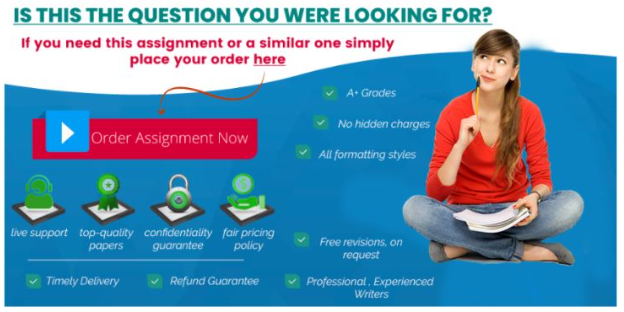US Social Psychology
Refer to the conformity and social norms section starting on p. 533 in your textbook. Then review the following two articles in Psychology Today: How Cultures Make People Conform & Social Conformity and Group Pressure
1. What are some prominent social norms in your assigned country? Is conformity more common and expected in that country? Please provide examples.
2. Further discussed in your textbook (p. 540) is how these social expectations and processes affect individual behavior but also impact the perceptions of others. Use this information to help identify one social bias (i.e., stereotypes, in-group/out-group bias, out-group homogeneity) common in your assigned country. (Please note that you should be researching social biases held by individuals who are native to your assigned country and not biases that are *about* your assigned country. For example, do not discuss a stereotype that Americans commonly believe about French people . Instead, discuss some of the biases that occur *within* French culture).
3. How does the specific bias listed above affect those living in that country? Does this social bias commonly lead to prejudice and discrimination?
4. Research discrimination issues in your assigned country. What group(s) are currently affected by discrimination (i.e., minorities, age groups, social, economic statuses, etc.) in that country?
5. Are any actions being taken to address these discriminatory issues (i.e., established laws, aide, movements, etc.)?
References
https://www.psychologytoday.com/us/blog/looking-in-the-cultural-mirror/201212/how-cultures-make-people-conform
https://www.psychologytoday.com/us/blog/non-weird-science/202305/social-conformity-and-group-pressure

Part B 600 words
Main post (United States)
Please read the following information related to concussions and then answer the questions below:
The brain sits in the cranium, surrounded by cerebral fluid. When a severe blow to the head occurs, the brain may collide with the cranium, then “bounce back” and collide with the opposite side of the cranium. At the neuronal level, a concussive blow to the head results in a twisting or stretching of the axons, creating swelling. Eventually, the swelling may subside, and neurons may return to normal functioning. However, if the swelling of axons is severe enough, these axons may disintegrate and even cause permanent damage. Many athletes will experience multiple concussions throughout their careers. Recently, in the U.S., the NFL has stated that it expects 1 in 3 former players to develop long-term cognitive issues.
1. What is a sport in your assigned country where concussions can and commonly occur? Football
2. What are at least two specific brain structures at risk of being affected by a concussion in this sport? What are the functions of these brain structures?
3. Based on the functions of the specific brain structures you chose, what are some temporary symptoms an individual may experience from trauma to those areas? What long-term issues can be seen from permanent damage to those areas in the brain? (Note – all these symptoms should be linked to the functions of the structures you discuss in question 2!)
4. Find one example of a player who experienced issues following a concussion from the sport in your assigned country you listed above in question 1. Explain what happened to this individual and how it affected their life.
5. Are there any regulations for this sport in that country? What are those regulations, and do you believe they are sufficient (why or why not)?
Part C (600 words)
Read the section in your textbook discussing the various ways culture impacts our memory on p. 282-285 and refer back to it for the following questions:
(Note: the textbook and e-book pages do not line up. While in the e-book, the actual page numbers will be indicated on the right hand on the screen within the text of the chapters)
1. Summarize two examples from the above section of the textbook of how culture impacts memory.
2. What memory processes do you think are universal and not impacted by cultural differences? Would you describe the overall process of forming memory as “universal” across cultures? Why or why not?
3. Research a current event in your assigned country ( an event that is not COVID-19). Please include the link to a news article about this event and summarize it here.
4. Using what you researched, discuss how being from that country/culture might impact the experience and memory of that particular event. Be sure to link your answer back to the readings from the textbook.
Refer to the conformity and social norms section starting on p. 533 in your textbook. Then review the following two articles in Psychology Today: How Cultures Make People Conform & Social Conformity and Group Pressure
1. What are some prominent social norms in your assigned country? Is conformity more common and expected in that country? Please provide examples.
2. Further discussed in your textbook (p. 540) is how these social expectations and processes affect individual behavior but also impact the perceptions of others. Use this information to help identify one social bias (i.e., stereotypes, in-group/out-group bias, out-group homogeneity) common in your assigned country. (Please note that you should be researching social biases held by individuals who are native to your assigned country and not biases that are *about* your assigned country. For example, do not discuss a stereotype that Americans commonly believe about French people . Instead, discuss some of the biases that occur *within* French culture).
3. How does the specific bias listed above affect those living in that country? Does this social bias commonly lead to prejudice and discrimination?
4. Research discrimination issues in your assigned country. What group(s) are currently affected by discrimination (i.e., minorities, age groups, social, economic statuses, etc.) in that country?
5. Are any actions being taken to address these discriminatory issues (i.e., established laws, aide, movements, etc.)?
References
https://www.psychologytoday.com/us/blog/looking-in-the-cultural-mirror/201212/how-cultures-make-people-conform
https://www.psychologytoday.com/us/blog/non-weird-science/202305/social-conformity-and-group-pressure
Part B 600 words
Main post (United States)
Please read the following information related to concussions and then answer the questions below:
The brain sits in the cranium, surrounded by cerebral fluid. When a severe blow to the head occurs, the brain may collide with the cranium, then “bounce back” and collide with the opposite side of the cranium. At the neuronal level, a concussive blow to the head results in a twisting or stretching of the axons, creating swelling. Eventually, the swelling may subside, and neurons may return to normal functioning. However, if the swelling of axons is severe enough, these axons may disintegrate and even cause permanent damage. Many athletes will experience multiple concussions throughout their careers. Recently, in the U.S., the NFL has stated that it expects 1 in 3 former players to develop long-term cognitive issues.
1. What is a sport in your assigned country where concussions can and commonly occur? Football
2. What are at least two specific brain structures at risk of being affected by a concussion in this sport? What are the functions of these brain structures?
3. Based on the functions of the specific brain structures you chose, what are some temporary symptoms an individual may experience from trauma to those areas? What long-term issues can be seen from permanent damage to those areas in the brain? (Note – all these symptoms should be linked to the functions of the structures you discuss in question 2!)
4. Find one example of a player who experienced issues following a concussion from the sport in your assigned country you listed above in question 1. Explain what happened to this individual and how it affected their life.
5. Are there any regulations for this sport in that country? What are those regulations, and do you believe they are sufficient (why or why not)?
Part C (600 words)
Read the section in your textbook discussing the various ways culture impacts our memory on p. 282-285 and refer back to it for the following questions:
(Note: the textbook and e-book pages do not line up. While in the e-book, the actual page numbers will be indicated on the right hand on the screen within the text of the chapters)
1. Summarize two examples from the above section of the textbook of how culture impacts memory.
2. What memory processes do you think are universal and not impacted by cultural differences? Would you describe the overall process of forming memory as “universal” across cultures? Why or why not?
3. Research a current event in your assigned country ( an event that is not COVID-19). Please include the link to a news article about this event and summarize it here.
4. Using what you researched, discuss how being from that country/culture might impact the experience and memory of that particular event. Be sure to link your answer back to the readings from the textbook.
What are some prominent social norms in your assigned country?, Is conformity more common and expected in that country? ,Please provide examples. Use this information to help identify one social bias (i.e., stereotypes in-group/out-group bias out-group homogeneity) common in your assigned country., How does the specific bias listed above affect those living in that country? Does this social bias commonly lead to prejudice and discrimination?, Research discrimination issues in your assigned country. What group(s) are currently affected by discrimination (i.e. minoritiesage groups social economic statuses etc.) in that country?, Are any actions being taken to address these discriminatory issues (i.e. established laws aide movements etc.)?









